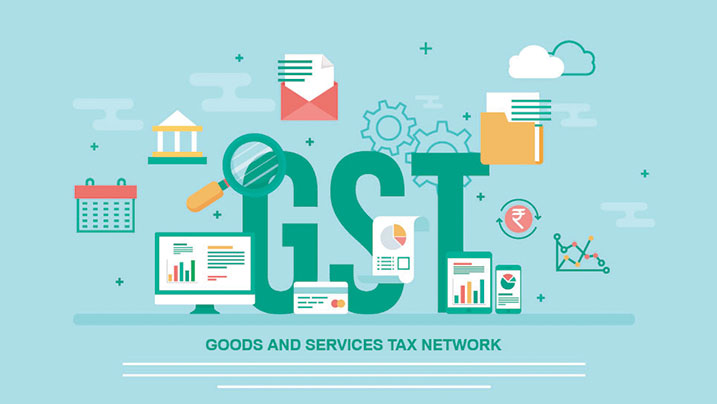CKYC Registry
-
Customer Service Contact us Service request Locate a branch
Find all the help you need
Scan the QR, get our app, and find help on your fingertips

Help CenterSupport topics, Contact us, FAQs and more
-
Login
Are you ready for an upgrade?
Login to the new experience with best features and services
-
Login
Are you ready for an upgrade?
Login to the new experience with best features and services
- Accounts
-
Deposits
IDFC FIRST Bank Deposits
View all Deposits -
Loans
IDFC FIRST Bank Loans
View all Loans - Wealth & Insure
-
Payments
IDFC FIRST Bank Payments
View all Payments -
Cards
IDFC FIRST Bank Cards
View all Cards - Blogs
- Corporate Account
-
Cash Management Services
IDFC FIRST Bank Cash Management Services
View all Cash Management Services - Supply Chain Finance
-
Corporate Lending
IDFC FIRST Bank Lending
View all -
Treasury
IDFC FIRST Bank Treasury
See more details - NBFC Financing
Support topics, Contact us, FAQs and more
- IDFC FIRST Bank Accounts
-
Savings Account
-
Corporate Salary
Account -
Senior Citizens
Savings Account -
First Power
Account -
Current Account
-
NRI Savings
Account -
TASC Institutional
Account -
Savings Account
Interest Calculator
- IDFC FIRST Bank Deposits
-
Fixed Deposit
-
Recurring Deposit
-
NRI Fixed Deposit
-
Safe Deposit Locker
-
FD Calculator
-
RD Calculator
- IDFC FIRST Bank Loans
-
Personal Loan
-
Consumer Durable
Loan -
Home Loan
-
Business Loan
-
Professional Loan
-
Education Loan
-
New Car Loan
-
Pre-owned Car Loan
-
Two Wheeler Loan
-
Pre-owned Two
Wheeler Loan -
Commercial Vehicle
Loan -
Gold Loan
-
Loan Against Property
-
Loan Against Securities
-
Easy Buy EMI card
-
Personal Loan
EMI Calculator -
Education Loan
EMI Calculator -
Home Loan
EMI Calculator
- IDFC FIRST Bank Wealth & Insure
-
FIRST Select
-
FIRST Wealth
-
FIRST Private
-
Mutual Funds
-
Sovereign Gold Bond
-
Demat Account
-
Term Insurance
-
Life Insurance
-
Health Insurance
-
General Insurance
-
Bonds
-
Loan Against
Securities -
Portfolio Management
Service
- IDFC FIRST Bank Payments
-
FASTag
-
Credit Card
Bill Payments -
UPI
-
Funds Transfer
-
Forex Services
-
Pay Loan EMI
- IDFC FIRST Bank Cards
-
Ashva :
Metal Credit Card -
Mayura :
Metal Credit Card -
FIRST Millennia
Credit Card -
FIRST Classic
Credit Card -
FIRST Select
Credit Card -
FIRST Wealth
Credit Card -
FIRST WOW!
Credit Card -
Deals
-
Debit Cards
-
Co-branded Cards
-
Credit Card
EMI Calculator -
FIRST Corporate
Credit Card -
FIRST Purchase
Credit Card -
FIRST Business
Credit Card
- Premium Metal Credit Cards
-
AshvaLifestyle1% Forex₹2,999
-
MayuraLifestyleZero Forex₹5,999
-
FIRST PrivateInvite Only
- Best for travellers
-
MayuraZero ForexMetal₹5,999
-
Ashva1% ForexMetal₹2,999
-
FIRST WOW!Zero ForexTravelLifetime Free
-
FIRST SWYPTravel OffersEMI₹499
-
FIRST Select1.99% ForexLifestyleLifetime Free
-
FIRST Wealth1.5% ForexLifestyleLifetime Free
-
Club VistaraTravelLifestyle₹4,999
-
IndiGo IDFC FIRST Dual Credit CardTravelLifestyle₹4,999
- Max benefits, Free for life
-
FIRST Classic10X RewardsShoppingNever Expiring Rewards
-
FIRST Millennia10X RewardsShoppingNever Expiring Rewards
-
FIRST Select10X RewardsLifestyle1.99% Forex
-
FIRST Wealth10X RewardsLifestyle1.5% Forex
-
FIRST WOW!RewardsTravelZero Forex
-
LIC ClassicRewardsInsuranceShopping
-
LIC SelectRewardsInsuranceShopping
- Reward Multipliers
-
AshvaLifestyleMetal₹2,999
-
MayuraLifestyleZero Forex₹5,999
-
FIRST ClassicNever Expiring RewardsShoppingLifetime Free
-
FIRST MillenniaNever Expiring RewardsShoppingLifetime Free
-
FIRST SelectNever Expiring RewardsLifestyleLifetime Free
-
FIRST WealthNever Expiring RewardsLifestyleLifetime Free
- Rewards & Credit on UPI
-
FIRST Power+FuelUPI₹499
-
FIRST PowerFuelUPI₹199
-
FIRST EA₹NVirtual1% Cashback₹499
-
FIRST DigitalVirtualUPI₹199
-
IndiGo IDFC FIRST Dual Credit CardUPITravelDual cards
- Fuel and Savings
-
FIRST PowerRewardsUPI₹199
-
FIRST Power+RewardsUPI₹499
-
LIC ClassicRewardsInsuranceShopping
-
LIC SelectRewardsInsuranceShopping
- Express and Flaunt
-
AshvaMetal1% Forex₹2,999
-
MayuraMetalZero Forex₹5,999
-
FIRST SWYPEMIOfferMAX₹499
-
FIRST MillenniaRewardsShoppingLifetime Free
- FD Backed rewarding Credit Cards for all
-
FIRST EA₹NVirtualCashback₹499
-
FIRST WOW!Zero ForexTravelLifetime Free
-
CreditPro Balance TransferTransfer & SaveReduce InterestPay Smartly
- IDFC FIRST Bank NRI Forex Solutions
-
Send money to India-Wire transfer
-
Send money to India-Digitally
-
Send money abroad
-
Max Returns FD (INR)
- IDFC FIRST Bank MSME Accounts
-
Platinum Current
Account -
Gold
Current Account -
Silver Plus
Current Account -
Merchant Multiplier
Account -
Agri Multiplier
Account -
TASC Institutional
Account -
Dynamic Current
Account -
World business
Account -
First Startup
Current Account
- IDFC FIRST Bank Business Loans
-
Business Loan
-
Professional Loan
-
Loan Against Property
-
Business Loan for Women
-
Working Capital Loan
-
Construction Equipment Loan
-
Machinery Loan
-
Healthcare Equipment Loan
- IDFC FIRST Bank Business Solutions
-
Payment Solutions
-
Tax Payments
-
Doorstep Banking
-
Point of Sale (POS)
-
Escrow Accounts
-
NACH
-
Payment Gateway
-
UPI
-
Virtual Accounts
-
As per amendment in the Income Tax Rules, PAN or Aadhaar are to be mandatorily quoted for cash deposit or withdrawal aggregating to Rupees twenty lakhs or more in a FY. Please update your PAN or Aadhaar. Kindly reach out to the Bank’s contact center on 1800 10 888 or visit the nearest IDFC FIRST Bank branch for further queries.
-
-
Most Searched
Sorry!
We couldn’t find ‘’ in our website
Here is what you can do :
- Try checking the spelling and search
- Search from below suggestions instead
- Widen your search & try a more generic keyword
Suggested
Get a Credit Card
Enjoy Zero Charges on All Commonly Used Savings Account Services
Open Account Now
After the Goods and Service Tax (GST) was introduced in India in July 2017, the Indian government prudently actioned security clearance to GSTN – the Goods and Service Tax Network. The reason this was a welcome move was that the GSTN doubles up as the tech backbone of the GST processing system.
Over 5 years since its inception into mainstream markets and media, GSTN continues to remain a privately held company under Section 8 of the New Companies Act, incorporated on the 28th of March 2013. Today, the GSTN is used to track down every single financial transaction and provide varied services to taxpayers. The portal is accessible to all.
While private business professionals own a 51% share in the GSTN, the Indian government owns the rest. Out of the total authorized capital of the GSTN, which stands at Rs 10 crore ($1.6 million) – 49 per cent of shares are divided equally between the Central and State governments. The remaining shares rest with private Indian banks.
READ MORE
Here’s a sneak peek into the definition and salient features of GSTN.
Quick definition: What is GSTN (Goods and Service Tax Network)?
The Goods and Service Tax Network (or GSTN) is a non-profit, non-government organization that manages the entire IT system of the GST portal. In layman’s terms, this is the parent database for all things related to GST.
The IT infrastructure will serve the Indian government in tracking financial transactions, tax payments, and comprehensive services to the taxpayers, such as registration on the portal, filing taxes, maintaining records of all the paid taxes, and getting quick query redressals.
The GSTN infrastructure is being developed with the purpose of making taxation convenient for both taxpayers and the government. With numerous complex transactions in large volumes, the GSTN network provides a secure, reliable, and robust platform for tax records and management.
What’s a GST number?
The Goods and Service Tax Identification Number or GSTIN number, colloquially referred to as “GST number” is a unique numeric code that each taxpayer receives once they have registered on the official GSTN portal. Your GSTIN number or GST number is directly based on your PAN card registration and PAN details.
Structure of GSTN
The goods and services tax network system is unique and has a robust structure involving central and state government and private banks. Private banks and financial institutions own a 51% share in the GSTN, and the remaining 49% share is equally divided between the central and state governments. The overall authorised capital allocated to the GSTN is 10 crores, which is distributed between private players and the government in proportion as mentioned above.
The GST Network has also been allocated a non-recurring grant of ₹315 crores. The technological development was undertaken by Infosys in September 2015. The current chairman of the GSTN is Sanjay Malhotra, a 1990 batch IAS Officer from the Rajasthan cadre and Manish Kumar Sinha is the chief executive officer, a 1993 batch IRS Officer.
GSTN provides a secure and robust IT infrastructure to taxpayers and the government for smooth collection of GST.
Key functions of the GSTN:
GST network provides an IT ecosystem for the taxpayers and the government. Thus, it forms a communication channel between the business taxpayers and the government authorities. The following are the key responsibilities of the GSTN.
• Invoices
GSTN manages and processes over 2 billion invoices every month from over 65 lakh taxpayers. It tallies the GST invoices to check for errors and rectifies them for taxpayers’ benefits.
• Various Returns
The GSTN is also responsible for processing and forwarding returns to state and central government. Since it is a unified body for filling all types of GST returns, such as CGST, SGST, and IGST, the GST network eliminates the need for multiple return filings.
• Registrations
It also provides a platform for taxpayers to register for paying GST online. GSTN onboard individuals looking to register for GST under new taxation laws. It creates their profiles and issues identification numbers and manages their GST profiles.
• Profile analysis
When an individual registers, GSTN also undertakes the profile analysis and verification process. It sends individuals’ details to central and state government tax authorities for approval.
Features and Benefits of GSTN
1. Trusted and reliable national utility
The GSTN has developed a trusted and reliable IT infrastructure for the flow of GST data. It provides a secure and robust network for the smooth functioning of goods and services tax in the country. So,
The GSTN is a trusted and respected National Information Utility that handles complex transactions
2. Security FIRST!
Since a major proportion of GSTN is owned by the central and state governments instead of an individual player, the government authorities oversee data security and privacy and hold the responsibility of confidentiality. All information is secured and closely monitored by authorities and are secure.
3. No added overheads
GSTN’s cost optimization model ensures all expenses will be shared and taxpayers do not bear additional burdens to track their GST records
4. Payments
Goods and Service Network provides options to pay GST online or offline. The taxpayers can choose a mode at their convenience. Here’s how taxpayers can pay their GST.
• Online payment
An individual can use the net banking facility to pay their GST. The Reserve Bank of India has authorised a few banks to collect GST payments. After logging into their bank accounts, taxpayers can choose from the list of agency banks and make payments.
• Offline payment
Individuals can also pay GST offline by visiting an agency bank and paying over the counter. After successful payment, the bank will notify the RBI and the GST portal to update payment details.
5. Expense distribution
The user charges are to be borne by the central and state government, in a 50:50 proportion, on behalf of all users. The state’s share will be distributed based on the number of taxpayers in a specific state.
And running it all, the backbone of the GSTN portal is a hi-tech interface that helps seamlessly navigate between taxpayers and the Indian government
The 100% digitized process, starting from registration to the filing of returns, supports over a whopping 3 billion invoices, every single month. The subsequent return filing for 70+ lakh taxpayers is also managed within the same network. The sheer volume could blow one’s roof off, right?
Disclaimer
The contents of this article/infographic/picture/video are meant solely for information purposes. The contents are generic in nature and for informational purposes only. It is not a substitute for specific advice in your own circumstances. The information is subject to updation, completion, revision, verification and amendment and the same may change materially. The information is not intended for distribution or use by any person in any jurisdiction where such distribution or use would be contrary to law or regulation or would subject IDFC FIRST Bank or its affiliates to any licensing or registration requirements. IDFC FIRST Bank shall not be responsible for any direct/indirect loss or liability incurred by the reader for taking any financial decisions based on the contents and information mentioned. Please consult your financial advisor before making any financial decision.
The features, benefits and offers mentioned in the article are applicable as on the day of publication of this blog and is subject to change without notice. The contents herein are also subject to other product specific terms and conditions and any third party terms and conditions, as applicable. Please refer our website www.idfcfirstbank.com for latest updates.























